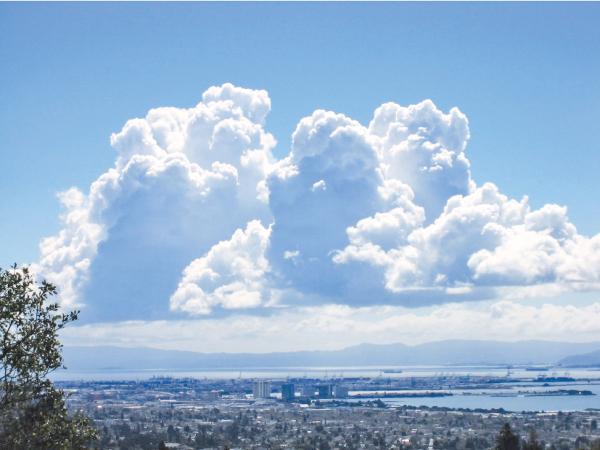
 Clouds
Clouds
Clouds are tiny drops of water in the air. They are so small and light that they float in the air. Clouds form from condensed water vapour. This can occur in a number of ways. One way is when warm air or a warm front, meets up with cold air or a cold front.
The warm air will be forced upward and into colder air. When the warm air starts to drop in temperature, water vapour will condense into liquid droplets and clouds will form. Also, warm damp air can blow up against a mountain.
The mountain will force the air up into the atmosphere. As this air cools, clouds will form. That's why there are often clouds at the top of mountains.
Not all clouds are the same. There are three main types of clouds called cumulus, cirrus, and stratus.
Cirrus - Cirrus clouds are high, thin clouds made of ice crystals. They generally mean good weather is on the way.
Cumulus - Cumulus clouds are the big puffy white clouds. They look like floating cotton. Sometimes they can turn into cumulonimbus or tall towering cumulus clouds. These clouds are thunderstorm clouds.
Stratus - Stratus clouds are the low flat and large clouds that tend to cover the entire sky. They give us those 'overcast' days and can drop light rain called drizzle.
Fog - Fog is a cloud that forms right at the surface of the Earth. Fog can make it very hard to see and dangerous for driving a car, landing a plane, or piloting a ship.
Weather Fronts
A weather front is a boundary between two different air masses, a warm air mass and a cold air mass. There is usually stormy weather at a weather front.
A cold front is where cold air meets warm air. The cold air will move under the warm air forcing the warmer air to rise quickly. Because the warm air can rise quickly, cold fronts can cause cumulonimbus clouds to form with heavy rain and thunderstorms.
A warm front is where warm air meets cold air. In this case the warm air will rise slowly over the top of the cold air.
Warm fronts can cause long periods of light rain and drizzle. Sometimes a cold front can catch up to a warm front. When this happens it creates an occluded front. Occluded fronts can generate heavy rain and thunderstorms.
- (Ducksters)
